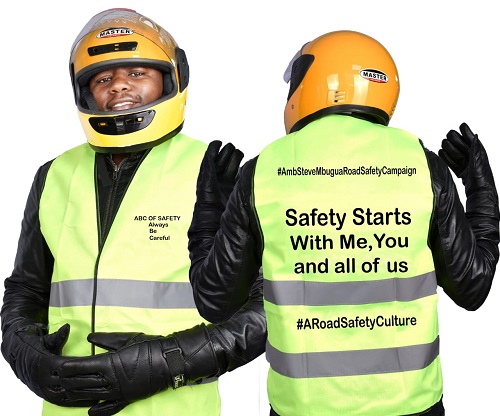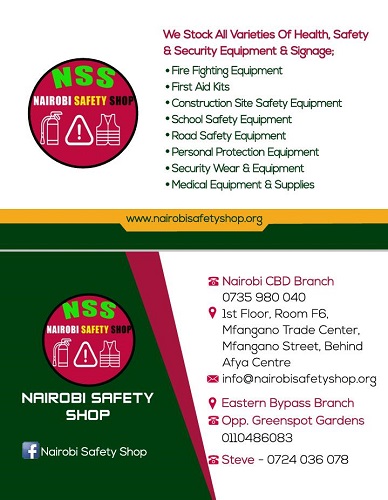In our diverse society, safety is a concern that spans across all demographics and community groups. As Ambassador Steve Mbugua, a globally acclaimed Ambassador of Safety, I bring extensive experience and insights into the realm of safety sensitization. Having worked with various organizations and communities worldwide, I have seen the critical need for tailored safety education that addresses the unique challenges faced by different society groups. This article delves into the specific groups that require targeted safety sensitization and outlines effective strategies for reaching and educating them. By understanding these needs and implementing comprehensive sensitization programs, we can foster safer, more informed communities.
Society Groups Needing Safety Sensitization
Schools and Educational Institutions
Students, teachers, and staff in educational settings are vulnerable to a range of safety issues, including emergencies, bullying, and health crises. Sensitization programs should focus on emergency preparedness, mental health awareness, and creating a safe learning environment.
Workplace Environments
Employees in various industries face different safety risks, from industrial accidents to office ergonomics. Tailored training sessions should address specific hazards relevant to each industry, promote workplace safety protocols, and encourage a culture of safety.
Community Organizations
Non-profits, community centers, and local groups often work with vulnerable populations. Safety sensitization for these groups should include training on safeguarding practices, emergency response, and health and wellness.
Senior Citizens
Older adults may face unique safety concerns, including falls, fraud, and health emergencies. Programs aimed at this demographic should focus on fall prevention, recognizing scams, and managing chronic conditions.
Youth and Family Services
Organizations supporting youth and families need safety sensitization to address issues such as child abuse prevention, domestic violence, and safe parenting practices.
Effective Strategies for Safety Sensitization
Customized Training Programs
Develop training sessions tailored to the specific needs of each group. Utilize case studies, practical exercises, and interactive content to ensure relevance and engagement.
Workshops and Seminars
Host regular workshops and seminars to keep community members informed about safety practices and updates. Provide opportunities for hands-on learning and discussion.
Community Outreach
Collaborate with local leaders and organizations to reach wider audiences. Use community events, social media, and local media to spread safety messages and resources.
Ongoing Education
Implement continuous education programs that offer refresher courses and updates on new safety practices and regulations. Encourage a culture of lifelong learning and vigilance.
Feedback and Evaluation
Regularly assess the effectiveness of sensitization programs through surveys, feedback sessions, and performance evaluations. Adjust strategies based on the needs and responses of the participants.
Below is a brekdown with rational and approach.
1. Children
o Approach: Utilize interactive games, school programs integrating safety into curriculum, and age-appropriate cartoons illustrating safety concepts.
o Rationale: Instilling early safety habits helps children develop awareness of potential dangers and promotes responsible behavior.
2. Elderly
o Approach: Conduct workshops focusing on fall prevention, home safety visits to assess hazards, and distribute easy-to-read safety materials.
o Rationale: Addressing specific needs of the elderly population reduces risks of falls and injuries, enhancing their quality of life.
3. Employees
o Approach: Implement workplace training covering hazard recognition, safety procedures, regular seminars on new safety protocols, and conducting safety drills.
o Rationale: Ensuring employees are well-trained in workplace safety reduces accidents, promotes a safety culture, and complies with regulatory requirements.
4. Healthcare Workers
o Approach: Provide specialized training on infection control, patient handling techniques through simulation exercises, and participation in conferences focused on healthcare safety.
o Rationale: Equipping healthcare workers with specialized safety skills reduces the risk of workplace injuries and infections, ensuring patient and staff safety.
5. Construction Workers
o Approach: Deliver on-site training addressing specific hazards, conduct regular toolbox talks on safety procedures, and demonstrate proper use of safety equipment.
o Rationale: Construction sites present unique risks; targeted training improves hazard awareness, reduces accidents, and enhances compliance with safety regulations.
6. Drivers
o Approach: Offer defensive driving courses emphasizing safe driving practices, use public service announcements to raise awareness, and launch traffic safety campaigns.
o Rationale: Educating drivers on road safety reduces accidents, injuries, and fatalities, promoting safer roads for all users.
7. Food Handlers
o Approach: Provide hygiene training covering food safety principles, require certification courses for food handlers, and conduct regular inspections of food handling practices.
o Rationale: Proper hygiene and food safety practices prevent foodborne illnesses, ensuring public health and compliance with food safety regulations.
8. Retail Workers
o Approach: Conduct shop safety workshops addressing hazards like slips and falls, train in customer handling techniques to prevent workplace violence, and establish emergency response procedures.
o Rationale: Retail environments involve customer interaction and potential hazards; training enhances employee safety, reduces incidents, and improves customer service.
9. Public Safety Personnel
o Approach: Provide advanced training on emergency response tactics, conduct joint exercises with other agencies to simulate real-world scenarios, and offer certification programs for specialized skills.
o Rationale: Enhancing skills and coordination among public safety personnel improves response effectiveness during emergencies, safeguarding public safety and property.
10. IT Professionals
o Approach: Offer cybersecurity workshops focusing on threats and prevention measures, provide online courses on secure coding practices, and encourage certification programs in cybersecurity.
o Rationale: Educating IT professionals on cybersecurity risks and best practices strengthens defenses against cyber threats, protects sensitive data, and ensures secure digital operations.
Conclusion
In conclusion, safety sensitization is a vital process that must be adapted to meet the needs of various society groups. As Ambassador Steve Mbugua, I have witnessed the profound impact of targeted safety education in enhancing community resilience and preparedness. By focusing on the specific requirements of each group and implementing effective sensitization strategies, we can build a culture of safety that protects individuals and strengthens communities. Investing in comprehensive safety education not only mitigates risks but also empowers people with the knowledge and skills to handle emergencies confidently. Together, let us advance safety awareness and create environments where every member of society can thrive in security and peace.
READ MORE
World Leading Safety Trainer
Largest Safety Company
Safety Training Video
Building A Culture Of Safety



















